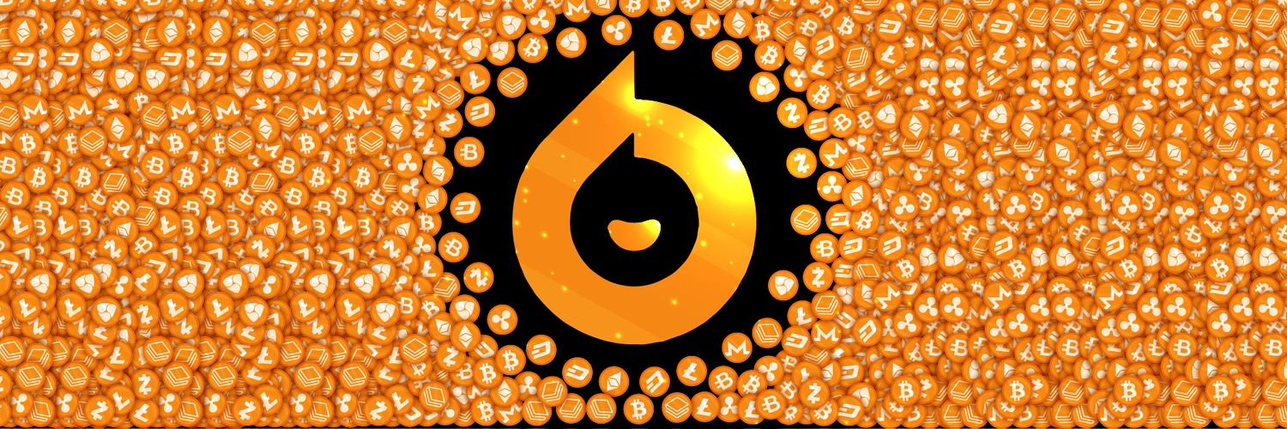


Precio de Virtuals ProtocolVIRTUAL
VIRTUAL to EUR converter
¿Qué opinas hoy de Virtuals Protocol?
Acerca de Virtuals Protocol (VIRTUAL)
¿Qué es el Virtuals Protocol?
Virtuals Protocol es un protocolo de IA y Metaverso lanzado en 2024. Se diseñó para revolucionar las interacciones virtuales creando experiencias hiperpersonalizadas e inmersivas. Virtuals Protocol se enfoca en la integración de agentes avanzados de IA en diversos entornos digitales, como el gaming, metaversos e interacciones online. El protocolo aprovecha la descentralización para fomentar la creatividad, la diversidad y la confianza, garantizando que los compromisos virtuales no solo sean innovadores, sino también equitativos para todos los participantes.
La transición a los espacios virtuales es inevitable, y Virtuals Protocol pretende liderar esta transformación haciendo que las interacciones virtuales sean más atractivas y reales. Utilizando IA generativa y resultados multimodales (texto, sonido, visuales), Virtuals Protocol mejora la personalización y la inmersión, convirtiendo cada experiencia virtual en una experiencia única. Este enfoque no solo enriquece las experiencias de los usuarios, sino que también crea nuevas oportunidades económicas para desarrolladores, creadores y usuarios dentro del ecosistema.
Recursos
Documentos oficiales: https://whitep aper.virtuals.io/
Página web oficial: https://www.virtuals.io/
¿Cómo funciona Virtuals Protocol?
Virtuals Protocol opera a través de un ecosistema descentralizado que incentiva la creación y el uso de agentes de IA, que son conocidos como VIRTUALs. Estos agentes pueden realizar interacciones complejas y multimodales, esto gracias a la integración de varios núcleos especializados, como el núcleo cognitivo, el núcleo de Voz y Sonido, además del núcleo Visual. Esta estructura permite a los VIRTUALs comportarse como personajes de propiedades intelectuales, realizar tareas específicas o incluso actuar como versiones digitales de individuos, potenciando así tanto el entretenimiento como la utilidad en los espacios virtuales.
El ecosistema se basa en dos layers principales: La layer Protocol y la layer dApp. La layer Protocol actúa como un centro de modelos, proporcionando modelos y algoritmos de IA fundamentales a los que los desarrolladores pueden acceder y sobre los que pueden crear. Los contribuidores aportan datos y desarrollan modelos, mientras que los validadores garantizan la calidad y autenticidad de estas entradas. La layer dApp, por su parte, se centra en la aplicación práctica de estos modelos de IA, permitiendo que las aplicaciones descentralizadas (dApps) integren VIRTUALs de forma fluida. Esta integración se ve facilitada por un kit de desarrollo de software (SDK) de fácil uso para desarrolladores, que simplifica el proceso de incorporación de funciones avanzadas de IA en diversos entornos de dApps.
Los incentivos económicos desempeñan un papel fundamental en el mantenimiento del ecosistema Virtuals Protocol. Los contribuidores y validadores son recompensados con tokens VIRTUAL por sus esfuerzos, lo que garantiza una afluencia continua de datos y modelos de alta calidad. El protocolo también emplea un esquema de recompra en donde los ingresos generados por las dApps se utilizan para recomprar tokens VIRTUAL, manteniendo el valor y la estabilidad del token. Este ciclo autosostenible, conocido como Virtual-ous Flywheel, garantiza que el ecosistema siga siendo vibrante y productivo.
¿Qué es el token VIRTUAL?
VIRTUAL es el token de utilidad y gobernanza del ecosistema Virtuals Protocol. Cumple múltiples funciones, entre ellas incentivar las contribuciones, apoyar las decisiones de desarrollo y gestionar la tesorería del protocolo. Los holders de tokens pueden poner en staking sus tokens VIRTUAL para influir en los agentes de IA que reciben apoyo al desarrollo, garantizando que la asignación de recursos se ajuste a los intereses de la comunidad.
Los tokens VIRTUAL también facilitan un plan de recompra, en donde una parte de los ingresos generados por las dApps se utiliza para recomprar tokens en el mercado abierto. Este mecanismo ayuda a mantener el valor del token y favorece la sostenibilidad del protocolo a largo plazo. Además, los holders de tokens VIRTUAL se benefician de airdrops relacionados con nuevas ofertas de tokens dentro del ecosistema, lo que fomenta aún más el compromiso y la participación a largo plazo. VIRTUAL tiene un suministro total de 1.000 millones de tokens.
¿Qué determina el precio de Virtuals Protocol?
El precio de Virtuals Protocol (VIRTUAL) recibe la influencia de varios factores, como la dinámica de la oferta y la demanda, el sentimiento del mercado y las últimas noticias en el espacio blockchain y Web3. Factores como el aumento en la adopción de Virtuals Protocol en aplicaciones descentralizadas (dApps), las tendencias positivas de las criptomonedas y las asociaciones estratégicas pueden impulsar la demanda y, en consecuencia, aumentar el valor del token. Por el contrario, la volatilidad del mercado, los cambios en la regulación de las criptomonedas y el sentimiento general en el mercado de las criptomonedas pueden afectar al precio. Mantenerse alerta de los gráficos de VIRTUAL y realizar análisis regulares de las criptos puede proporcionar información sobre posibles movimientos de precios.
Además de estos factores, los modelos de predicción de precios en las criptomonedas y los análisis de expertos pueden ayudar a los inversores a calibrar el rendimiento futuro del token VIRTUAL. El precio del token también se ve afectado por los tokenomics del protocolo, incluido el plan de recompra y las estrategias de distribución de tokens. A medida que el ecosistema crece y más dApps utilizan VIRTUAL, el valor del token puede aumentar, por lo que podría ser la mejor criptoinversión para 2024 y los años que sigan. Sin embargo, los inversores deben ser conscientes de los riesgos de las criptomonedas y la volatilidad del mercado, asegurándose de mantenerse informados sobre los últimos acontecimientos y tendencias dentro del ecosistema de Virtuals Protocol.
Aquellos interesados en invertir u operar con Virtuals Protocol se preguntarán: ¿Dónde puedo comprar VIRTUAL? Puedes comprar VIRTUAL en los principales exchanges, como Bitget, que ofrece una plataforma segura y fácil de usar para los entusiastas de las criptomonedas.
AI analysis report on Virtuals Protocol
Virtuals Protocol price today in EUR
Historial del precio de Virtuals Protocol (EUR)
 Precio más bajo
Precio más bajo Precio más alto
Precio más alto 
¿Cuál es el precio más alto de Virtuals Protocol?
¿Cuál es el precio más bajo de Virtuals Protocol?
Predicción de precios de Virtuals Protocol
¿Cuál será el precio de VIRTUAL en 2026?
¿Cuál será el precio de VIRTUAL en 2031?
Preguntas frecuentes
¿Qué factores influyen en el precio de Virtuals Protocol?
¿Cómo puedo comprar Virtuals Protocol en el intercambio Bitget?
¿Cuál es la predicción de precio futura para Virtuals Protocol?
¿Por qué es tan volátil el precio de Virtuals Protocol?
¿Puede el precio del Protocolo Virtual alcanzar los 100 dólares?
¿Cómo afecta el staking de Virtuals Protocol a su precio?
¿Cuáles son los riesgos de invertir en el Protocolo Virtual?
¿Con qué frecuencia cambia el precio del Protocolo Virtuals?
¿Es Virtuals Protocol una buena inversión?
¿Qué debo comprobar antes de comprar Virtuals Protocol?
¿Cuál es el precio actual de Virtuals Protocol?
¿Cuál es el volumen de trading de 24 horas de Virtuals Protocol?
¿Cuál es el máximo histórico de Virtuals Protocol?
¿Puedo comprar Virtuals Protocol en Bitget?
¿Puedo obtener un ingreso estable invirtiendo en Virtuals Protocol?
¿Dónde puedo comprar Virtuals Protocol con la comisión más baja?
Virtuals Protocol news
Virtuals Protocol updates
Mercado de Virtuals Protocol
Holdings de Virtuals Protocol
Matriz de distribución de holdings de Virtuals Protocol
Holdings por concentración de Virtuals Protocol
Virtuals Protocol direcciones por tiempo en holding

Global Virtuals Protocol prices
- 1
- 2
- 3
- 4
- 5
Cómo comprar Virtuals Protocol(VIRTUAL)

Crea tu cuenta gratuita en Bitget

Verifica tu cuenta

Convierte Virtuals Protocol a VIRTUAL
Tradea futuros perpetuos de VIRTUAL
Después de registrarte en Bitget y comprar tokens de USDT o VIRTUAL exitosamente, puedes empezar a hacer trading con derivados, incluidos futuros de VIRTUAL y trading con margen para aumentar tus ingresos.
El precio actual de VIRTUAL es de €0.5047, con un cambio en el precio en 24 horas del +7.80%. Los traders pueden obtener ganancias yendo en long o en short en futuros de VIRTUAL.
Únete al copy trading de VIRTUAL siguiendo a traders elite.
Nuevos listados en Bitget
Comprar más
¿Dónde puedo comprar Virtuals Protocol (VIRTUAL)?
Sección de video: verificación rápida, trading rápido

VIRTUAL to EUR converter
Clasificación de Virtuals Protocol
Bitget Insights


Activos relacionados
Additional info on Virtuals Protocol
Resumen de la moneda
Relacionado con la moneda
Relacionado con el trading
Actualizaciones de la moneda
Trading
Earn
VIRTUAL/USDT
SpotVIRTUAL/USDT
MargenVIRTUAL/USDT
Futuros USDT-M
































